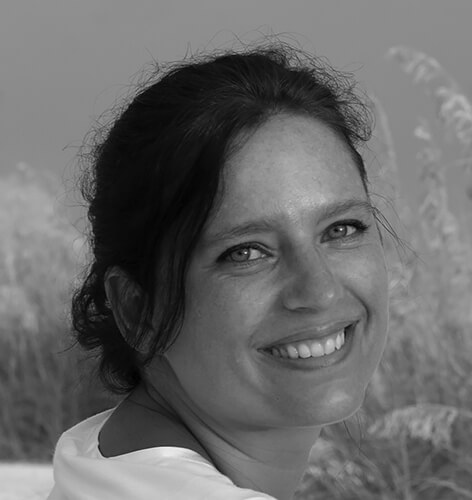Sandrine Hermand-Grisel grew up in Paris, France and in London, UK. She studied International Law before deciding to dedicate her life to photography in 1997. Influenced by her late mother's sculptures and her husbands paintings and films, she worked on several personal projects before her series Nocturnes was recognized in 2005 by Harry Gruyaert, Bertrand Despres and John Batho for the Prix Kodak de la Critique Photographique. In 2006 she moved with her family to the United States and began experimenting landscape photography with her series Somewhere and On the road.
Despite the diversity of her projects she has a unique, very intimate, relationship with her subjects. Photography provides her with a way to express her feelings, like in the series ''Nocturnes'' where she photographed only close friends and family members peacefully abandoning themselves in front of her camera. ''Somewhere'' is her dream of America, a road trip through her adopted country. And ''Waterlilies'' is full of joy and love for her two children as she watched them jumping and playing in pools over and over again. Sandrine Hermand-Grisel not only photographs what she loves, she breaks free from her own reality in her poetic vision of the world.
In 2013, she created the acclaimed website All About Photo and now spends most of her time discovering new talents while still working on personal projects.
All about Sea Sketches
Since I was a little girl my parents insisted that my brother and I accompany them almost every weekend to see an exhibition, a museum or an historic house. What was excruciating at first slowly became a real pleasure. Thanks to them, I had the privilege to see incredible exhibitions both in Paris and London where I grew up. Depending on my age and moods at the time, I favored a century, a movement, a painter...
It was love at first sight when I discovered "Wanderer above the Sea of Fog" by Caspar David Friedrich. In the foreground, a young man stands upon a rocky precipice with his back to the viewer. He overlooks a landscape covered in a thick sea of fog. I was overwhelmed by the beauty of nature, the subtle colors, the calm and yet the movement that came from the wind.
I perceived the character as content and in harmony with nature and I wondered if one day I would find my perfect place... and many years later, I did. On the west coast of Florida lies Anna Maria, a quaint barrier island nestled in the Gulf of Mexico. The water is warm and turquoise, the sand is white. Well preserved, the birds and turtles come here to nest while the respectful tourists lie on the sand every night to witness the incredible sunsets. Time is suspended.
With the romantic painters Turner and Friedrich in mind, I captured a glimpse of Anna Maria, its light, its beaches, its movement, its unleashed elements... I hope you will immerse yourself in my Sea Sketches "paintings" and escape with me, even for the length of a sigh, from the harsh realities of life and share my happy place.
